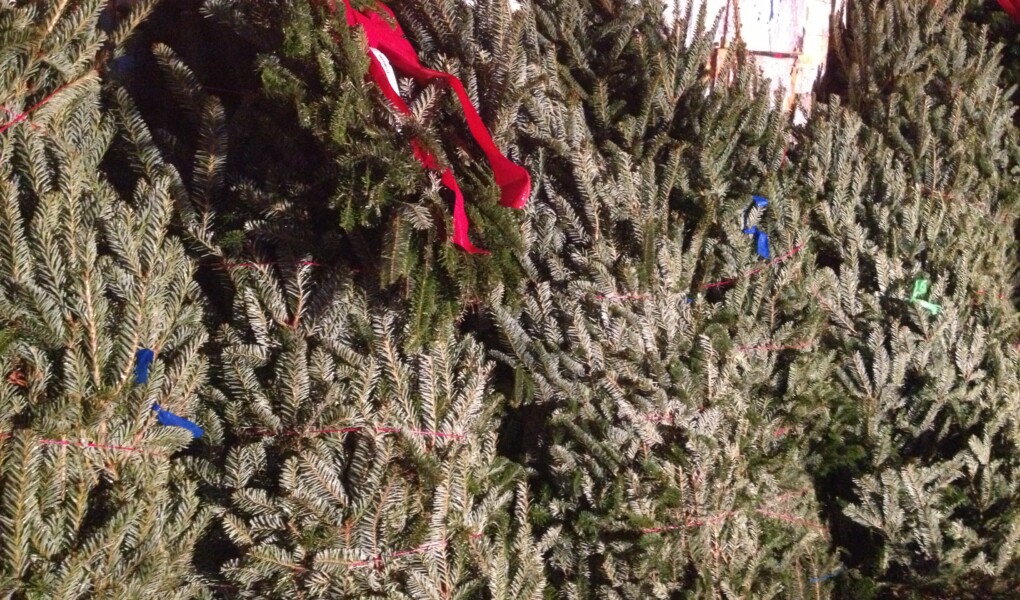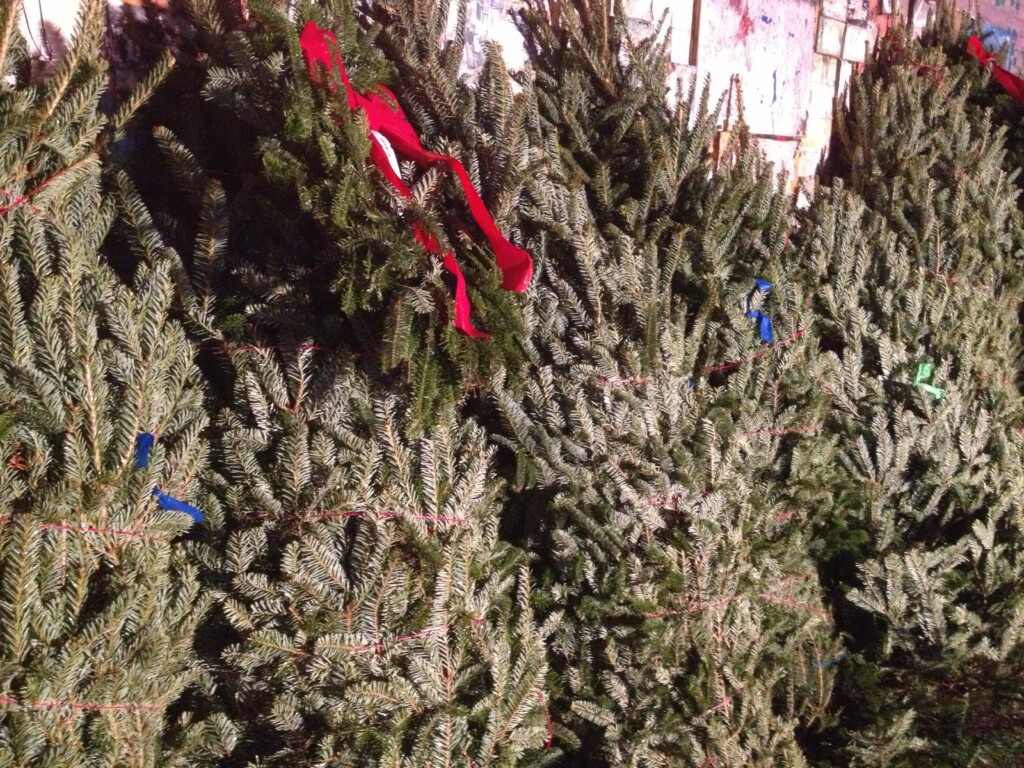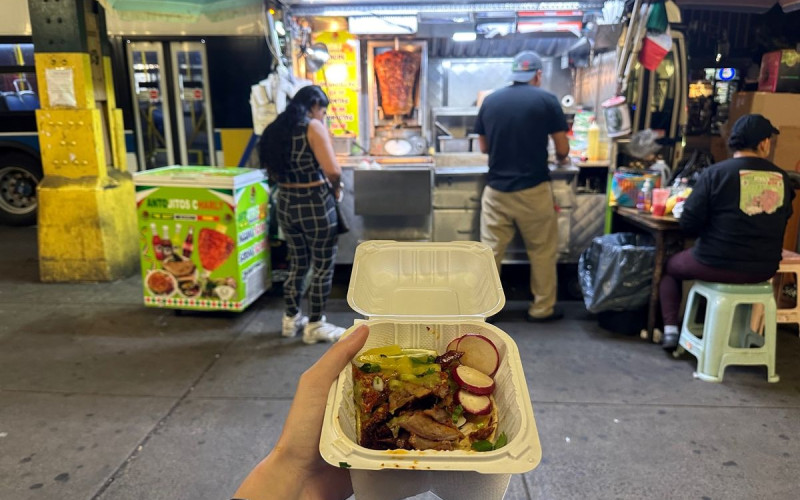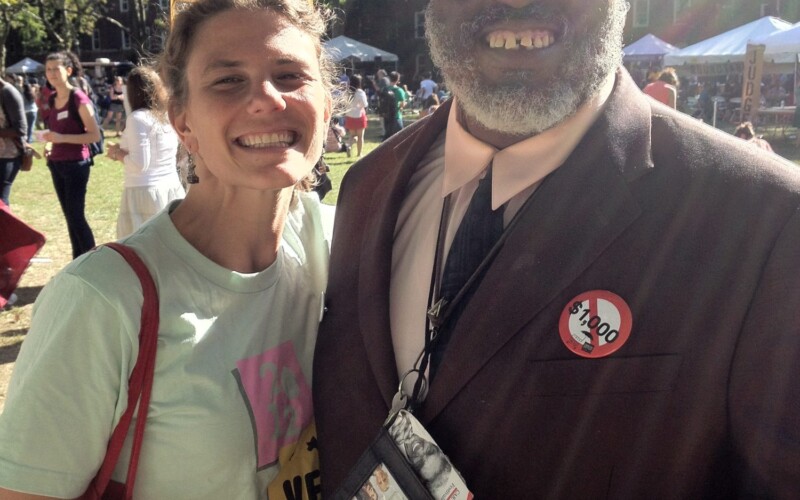It’s that time of year again – we’ve had our first snow in New York City, Christmas music is playing in every shop and store, and Christmas tree stands line the sidewalks.
While most Americans buy their Christmas trees from places like hardware stores, garden centers, churches, or Wal-Mart, New Yorkers rely on a somewhat unique economy of sellers that occupy public sidewalks all over the city for one month a year. So, how did we arrive at this arrangement, and why does it persist when so much of our city’s sidewalk economy has been stamped out?
For starters, why do we even need Christmas trees? Evergreen trees have for centuries been a part of Christmas celebrations in Germany and northern Europe, but the practice of decorating an indoor tree did not take off in the United States until the mid-19th century. The German-born British monarch Prince Albert brought it to his adopted homeland, and an image published in 1848 of the royal family gathered around the tree set off a Christmas tree fad in Britain. A similar sensation took off when the image was republished in the US in 1850 (slightly altered), and soon Americans were filling their living rooms with evergreens.
Which brings us to New York, where the country’s first commercial Christmas tree lot was set up in 1851 in lower Manhattan, on Greenwich and Vesey streets, run by a farming family from the Catskills. By 1898, roughly 300,000 trees were being shipped into the city every year. Over the course the late 19th and early 20th centuries, distribution of trees relied on a network of independent sidewalk sellers who could bring the items into the city’s densely-packed neighborhoods – as was the case with most consumer goods at that time, including food and clothing. Christmas tree hawkers were not out of place beside milkmen, fish mongers, rag pickers, and oyster shuckers on New York City streets.
Enter Mayor Fiorello LaGuardia. Elected in 1934, in 1938 he declared a sort of “War on Christmas [trees].” As part of his protracted campaign to stamp out – or, at the very least, greatly reduce – street peddling, that year the mayor set his sights on Christmas tree vendors. During his tenure, LaGuardia did manage to clear peddlers from many streets that had once become de facto open-air markets, moving many vendors to specially-designated areas or into his new network of indoor markets. His campaign was largely motivated by a desire to make New York City’s streets more amenable to automobile traffic, and by an earnestly-held belief that street vending, which was mostly done by immigrants, was a lowly profession that prevented them from advancing and assimilating in American society.
But for most New Yorkers, banishing Christmas trees from the streets was a bridge too far. For the 1938 Christmas season, LaGuardia enacted regulations requiring sellers to apply for licenses that were nearly impossible to get. (Incidentally, this was the same year that LaGuardia took on the Good Humor ice cream peddlers, also with limited success). As a result, according to an item in the New York Sun, the wholesalers who brought trees into the city had suddenly lost their network of sellers and had difficulty getting their trees into the hands of retail customers. The City Council, however, answered these howls of protest, enacting the so-called “coniferous tree” exception, which not only allows the sale of evergreen plants on city streets during the month of December, but no license is required to do so, only the consent of the adjacent property owner (and you can’t obstruct traffic). This sweeping change was enacted over the mayor’s veto, much like another major change to street vending law that passed 75 years later. This December exception still stands and has since been expanded to include the sale of palm, willow, and myrtle branches and citron plants during September and October for the Jewish holiday of Sukkot.
Today, trees begin piling up on the sidewalk starting December 1 (and sometimes a bit earlier), though they weren’t always out so early. The Long Island Star-Journal reported in 1948 on a tree vendor in Flushing, Queens who started selling his trees “early” on December 9, even though he admits no one would be buying them for a week yet. “But It’s just the Idea of keeping ahead,” he argued. If every year you wonder how the Christmas season seems to begin before we have even taken off our Halloween costumes, maybe there’s your answer – everyone’s just trying to “keep ahead.”
And so this profession persists, as legions of seasonal workers – some local, some from as far away as Maine, Quebec, Nova Scotia, and beyond – sit patiently on the sidewalk, waiting for someone to pick out the perfect Doug fir or blue spruce for their apartment around the corner. We would go into more detail about their daily grinds (as we do about the mobile food vending industry on our tours), but these people and their wares are a favorite subject of writers and reporters, and every year we are treated to a new crop of profiles of these hearty salespeople. WNYC’s Brian Lehrer recently spoke with a couple of Christmas tree vendors. Over the last 25 years, the Romp family of Vermont has been profiled in the New York Times (again and again), as well is in the phenomenal book Sidewalk by sociologist Mitchell Duneier, as a sort of archetype for tree vendors. Plus, a couple of years ago, the Times did a series with a locally-based vendor, Nikola Ivkovic, and Atlantic Cities wrote last year about the cutthroat world of selling trees in city parks (which does require permits, auctioned off by the city to highest bidder).





